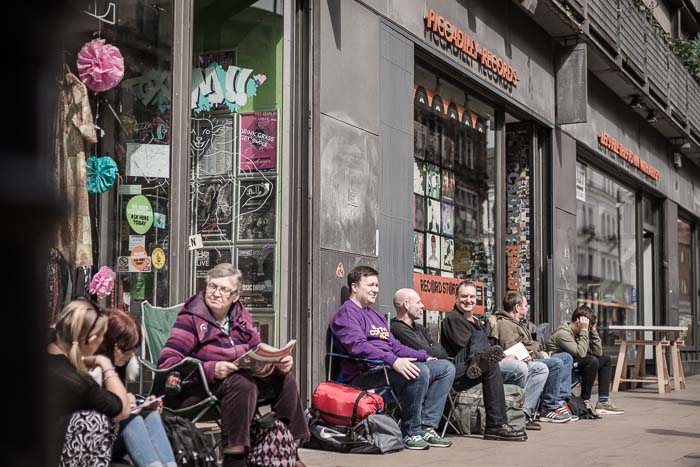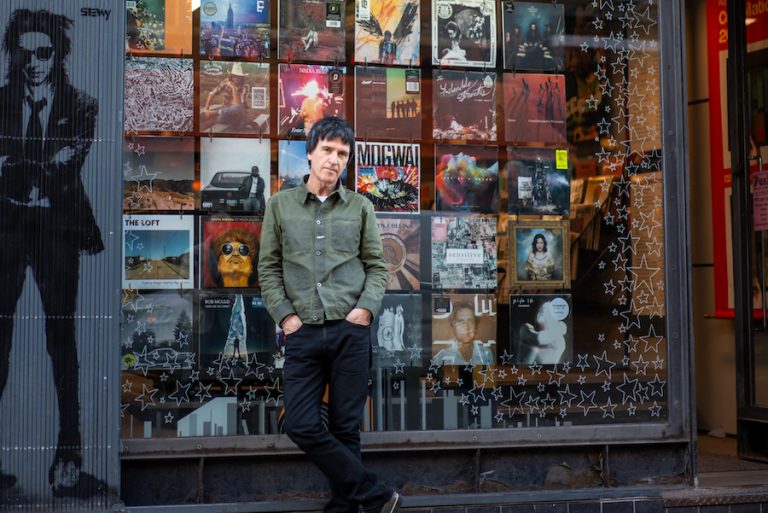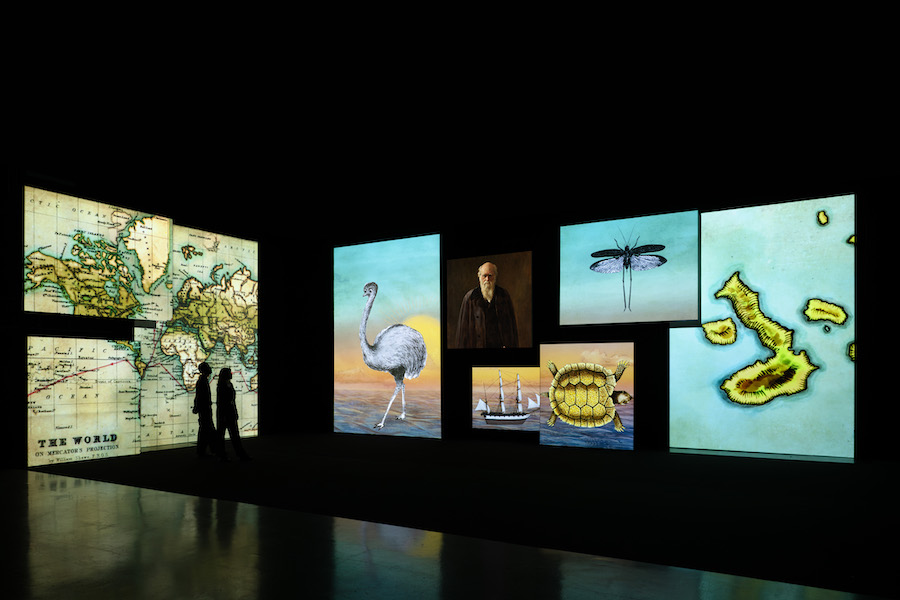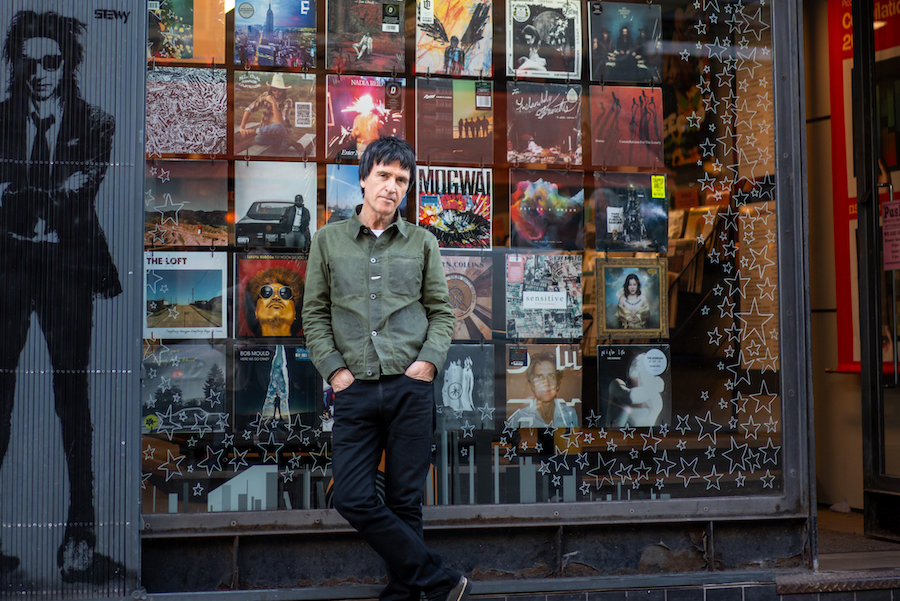120 years of the iconic Salford Lads Club
- Written by Thom Bamford
- Last updated 1 year ago
- City of Salford, Community, Cornerstone, Featured, History

Nestled in the heart of Salford, Greater Manchester, stands a modest yet iconic building that has weathered the winds of time and left a huge impression on both the local community and the global music scene.
Salford Lads’ Club, with its unassuming brick exterior and historic interiors, has a history that stretches back 120 years, weaving a narrative of resilience, cultural influence, and the power of community.
From its inception as a response to the challenges faced by young boys in an industrialised era to its transformation into a symbol of music and social heritage, the story of Salford Lads’ Club is a tale of evolution and inspiration.
In the late 19th century, as urbanisation swept through industrial cities, concerns grew over the future of young boys who found themselves at the crossroads of opportunity and delinquency.
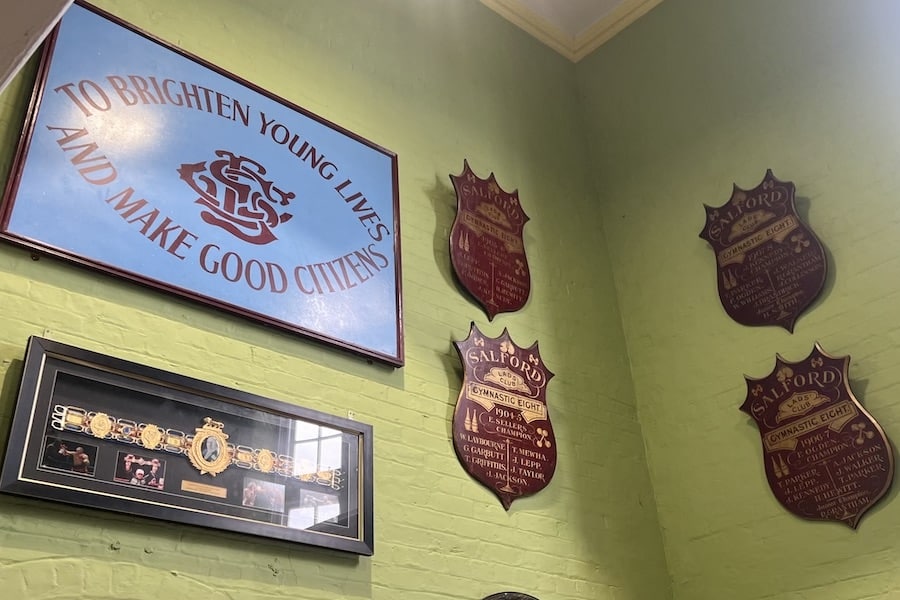
Against this backdrop emerged the concept of boys’ clubs, designed to provide an alternative to the streets and a path toward positive growth.
Among these establishments, Salford Lads’ Club stands as a pioneer, founded in 1903 by James and William Groves, scions of the Groves and Whitnall Brewery family.
Their vision was simple yet profound: to offer a haven where young boys could escape the clutches of street gangs and engage in activities that fostered personal development and community bonds.
This materialised in a purpose-built club, officially opened in 1904 by none other than Robert Baden-Powell, the founder of the Scout movement, who recognised the club’s potential to shape young lives.
With its doors open from evening till night, the club swiftly garnered memberships and became a second home for countless boys seeking direction and camaraderie.
The Salford Lads Club
Salford Lads and Girls Club, established in 1903 with the mission to “Brighten Young Lives and Make Good Citizens,” continues to fulfil its purpose 120 years later.
Charlotte, a dedicated volunteer at the club, shared insights into the organisation’s enduring commitment to fostering the well-being and development of young boys and girls.
Speaking to I Love MCR, she said: “The club offers a diverse range of activities, ensuring that young people can engage in sports, and creative pursuits, and receive support from positive role models in a safe environment.
“These activities encompass football for both genders, boxing for adults and children, crafting sessions, pool and table tennis, and even an annual camping trip to the picturesque Lake District.
“Additionally, members have the opportunity to explore cultural and educational outings, such as visits to theatres, museums, and sports events.
“However, Salford Lads and Girls Club holds a special place in the hearts of music enthusiasts worldwide, particularly fans of The Smiths.
“A famous photo taken by Steven Wright outside the club has made it a pilgrimage site for Smiths fans from all corners of the globe, including Chile, Colombia, South America, China, Japan, Indonesia, the United States, Canada, Europe, and Australia.
“Visitors contribute their messages and photos to the dedicated Smiths room, a tradition that has become so popular that digital screens have been installed to accommodate the overflow of mementoes. We’ve even had a couple get married in the Smith’s room!”

As the club looks ahead to its next 120 years, Charlotte revealed exciting plans.
To commemorate its long-standing presence, a grand birthday celebration is in the works, inviting the local community and beyond to join in the festivities.
Exhibitions showcasing the Smiths Room and Salford’s heritage will be featured, along with guided tours, including twilight tours of the historic building.
A music project for young girls, generously funded by Tim Peaks, the brainchild of Tim Burgess from the Charlatans, is also on the horizon, aimed at nurturing musical talent among the club’s female members.
Foundation and Early Years: 1903-1920s
Salford Lads’ Club, situated in the heart of Ordsall, Greater Manchester, was established in 1903 as a response to the growing concern over the direction of young boys’ lives in the industrialised cities of the 19th century.
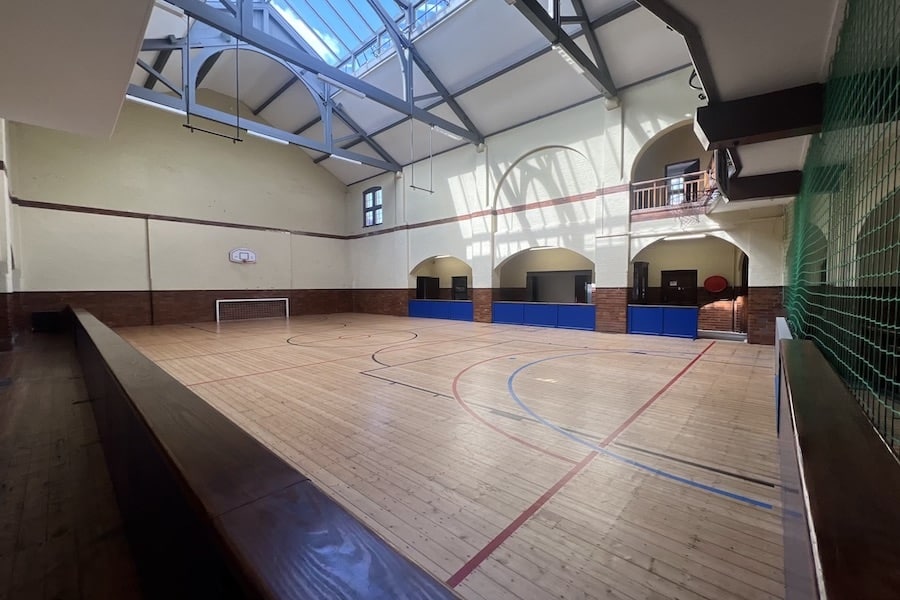
The club’s founders, James and William Groves, members of the Groves and Whitnall Brewery family, recognised the need to provide an alternative to the street gangs and potential trouble that many young boys faced at the time.
In partnership with local philanthropists and driven by the desire to cultivate “good and worthy God-fearing citizens,” they set up the club to offer activities and guidance.
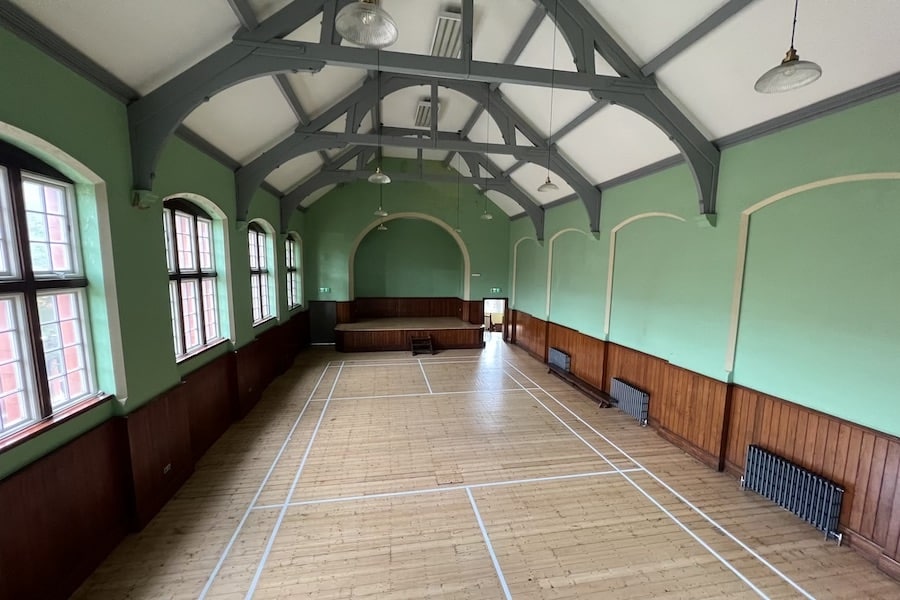
The club was designed by Salford architect Henry Lord and officially opened on January 30, 1904, by Robert Baden-Powell, who would later establish the Scout movement.
It quickly became a focal point for the youth of the area, offering a range of activities including gymnastics, boxing, swimming, and outdoor games, all of which aimed to keep the boys engaged and off the streets.
Cultural Impact and Musical Connections: 1930s-1960s
As the decades progressed, Salford Lads’ Club maintained its role as a community hub, offering not only physical activities but also opportunities for personal growth and development.
By the 1960s, the club had garnered a reputation as a nurturing environment for budding talents.

Notable figures such as Allan Clarke and Graham Nash, both of whom would become members of the popular 1960s pop group The Hollies, practiced and honed their musical skills within the club’s walls.
Graham Nash was also part of the iconic group, Crosby, Stills & Nash.

This period marked the beginning of the club’s close ties to the world of music.
The Smiths and Iconic Status: 1980s-Present

The 1980s brought Salford Lads’ Club to a new level of cultural significance.
The iconic photo of four young men, taken by Stephen Wright in front of the club’s distinctive signage, gained international recognition when it was used as the inside cover of The Smiths’ album “The Queen Is Dead.”
This image not only became synonymous with The Smiths but also solidified the club’s status as a cultural landmark.
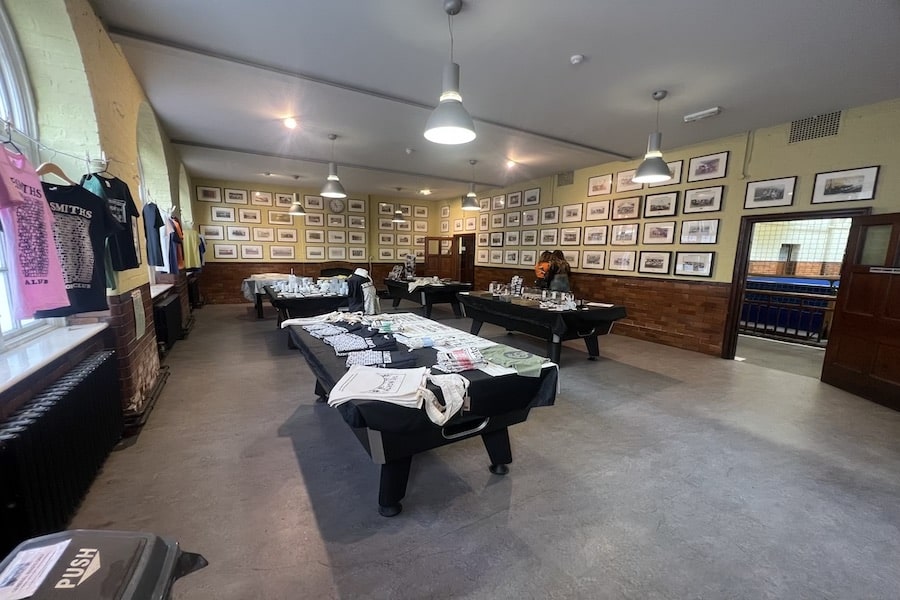
The club’s history and connection to The Smiths attracted fans from around the world, who made pilgrimages to the site.
The music videos of The Smiths’ songs “There Is A Light That Never Goes Out” and “Stop Me If You Think You’ve Heard This One Before” featured shots of the club’s exterior, further intertwining the club with the band’s legacy.
Preservation and Modern Activities: 2000s-Present
In the early 2000s, Salford Lads’ Club faced challenges as the building fell into disrepair.
However, a series of fundraising efforts, including support from figures like former Smiths’ frontman Morrissey, led to the restoration of the building.
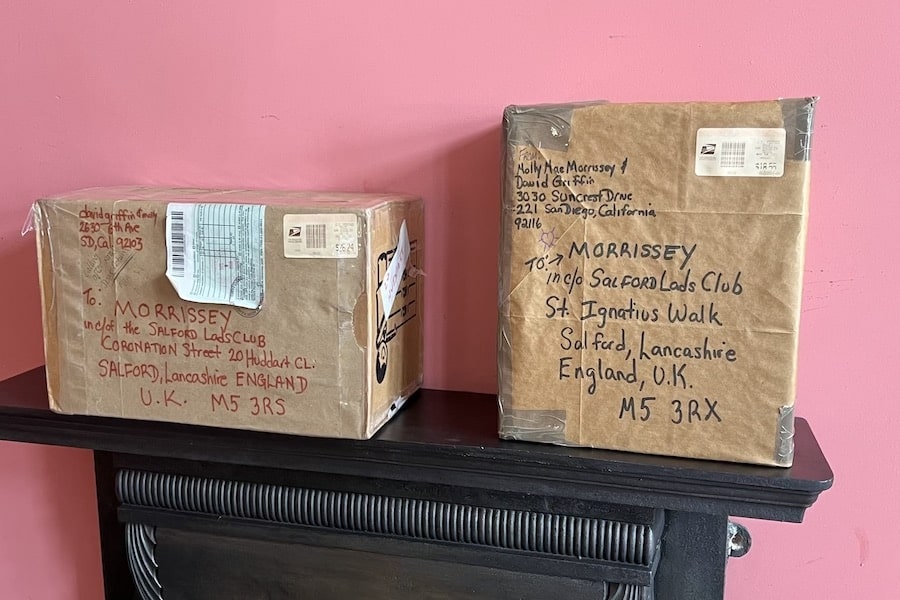
The club’s role in Channel 4’s series “The Secret Millionaire” and continued dedication from volunteers and supporters ensured its continued existence.
Today, Salford Lads’ Club stands not only as a testament to its founders’ vision but also as a living embodiment of its historical and cultural significance.
Activities have expanded to welcome both genders, and the club’s offerings include football, snooker, table tennis, boxing training, dance, exhibitions, and more.
The Smiths Room
Originally constructed as a fives court, the ground floor room adjacent to the main gym room underwent a series of transformations that mirror the shifting tides of time and interests.
In 1920, the room was reshaped into a changing room for gymnastics and football, reflecting the evolving needs of the club’s youth.
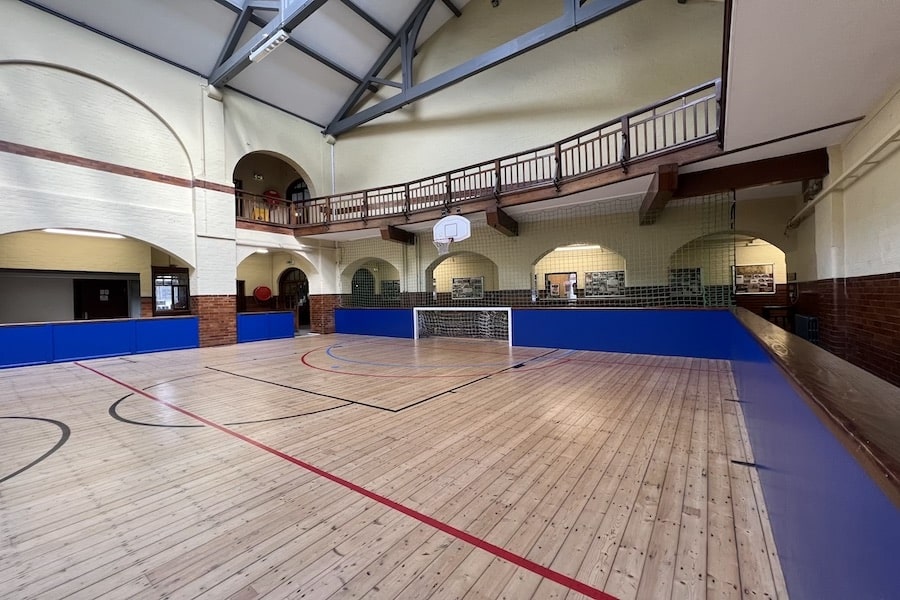
By the 1970s, its role shifted again, becoming a haven for weightlifting and bodybuilding enthusiasts.
As the decades marched on, this room quietly preserved its history, retaining a remarkable collection of photographs and equipment that bore witness to its diverse roles over the years, some artifacts dating as far back as the mid-20th century.
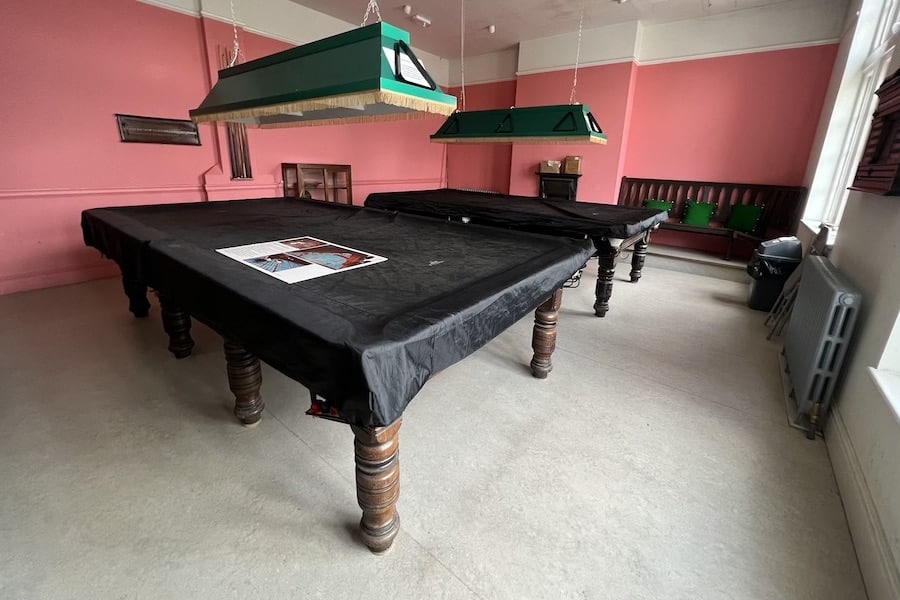
In 2003, the club hosted a live BBC Radio 6 Music program commemorating the 25th anniversary of The Smiths’ debut single “Hand in Glove.”
Fans were invited to join in the celebration, and it was during this event that Leslie Holmes, the Project Manager, conceived an idea that would further intertwine the club’s history with the music that had left a mark on it.
The weightlifting room, with its treasure trove of artifacts, would be transformed into The Smiths Room, a space where fans could pay homage to their musical icons by leaving behind their own messages and pictures.
The vision for The Smiths Room came to fruition in 2004 as part of the club’s Heritage Lottery Fund project “From Baden Powell To Morrissey.” Leslie Holmes, with his passion for preserving the club’s heritage, curated a space that told the story of The Smiths’ connection to Salford Lads’ Club.
It was a homage to the band that had immortalised the club’s exterior in their album art, but it also became a canvas for fans to share their personal connection to the music and the club.
In June 2004, The Smiths Room was inaugurated, with its first pictures and post-it notes from fans adorning the walls.
The room became a living testimony to the club’s enduring bond with The Smiths and the community that rallied around both.
The mosaic that once adorned the exterior of Afflecks Palace, an iconic Manchester landmark, found a new home within The Smiths Room. Donated by Elaine Walsh, the founder of Afflecks Palace, the mosaic features Morrissey and other music legends of Manchester.
This mosaic, created by Mark Kennedy, had initially graced the exterior of Afflecks Palace, where it had become a cherished piece of the city’s cultural tapestry. Its relocation to The Smiths Room further solidified the room’s role as a shrine to music and heritage.
Three electronic screens were introduced in July 2023.
These screens, inaugurated by Smiths fan and club trustee Angie Cooke, offer a dynamic platform to showcase the myriad of photographs and poignant post-it notes left by visitors.
This digital enhancement brings a modern twist to The Smiths Room, bridging the past with the present in a celebration of music, history, and the shared experience of those who walk through its doors.
Celebrating 120 Years: Looking Ahead
As Salford Lads’ Club marks its 120th anniversary, it stands as a cultural icon that will no doubt inspire generations to come.
Its journey from a response to societal challenges in the early 20th century to a cultural icon of the modern era is a testament to its resilience and adaptability.
The club’s legacy lives on through its role in shaping the lives of countless individuals and its enduring place in the fabric of Salford’s history.
If you want to help out at this amazing club, you can donate to them here
- This article was last updated 1 year ago.
- It was first published on 25 August 2023 and is subject to be updated from time to time. Please refresh or return to see the latest version.
Did we miss something? Let us know: press@ilovemanchester.com
Want to be the first to receive all the latest news stories, what’s on and events from the heart of Manchester? Sign up here.
Manchester is a successful city, but many people suffer. I Love Manchester helps raise awareness and funds to help improve the lives and prospects of people across Greater Manchester – and we can’t do it without your help. So please support us with what you can so we can continue to spread the love. Thank you in advance!
An email you’ll love. Subscribe to our newsletter to get the latest news stories delivered direct to your inbox.
Got a story worth sharing?
What’s the story? We are all ears when it comes to positive news and inspiring stories. You can send story ideas to press@ilovemanchester.com
While we can’t guarantee to publish everything, we will always consider any enquiry or idea that promotes:
- Independent new openings
- Human interest
- Not-for-profit organisations
- Community Interest Companies (CiCs) and projects
- Charities and charitable initiatives
- Affordability and offers saving people over 20%
For anything else, don’t hesitate to get in touch with us about advertorials (from £350+VAT) and advertising opportunities: advertise@ilovemanchester.com
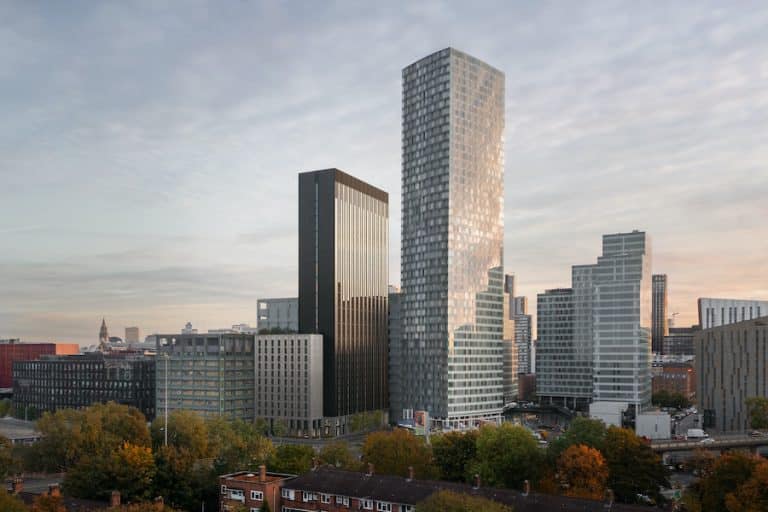

The Manc aerobics queen who trained the Corrie cast is helping raise charity cash

Ancoats to get even cooler as independent market set for MOT garage site

“Manchester is not Britain’s second city, it’s the first” – Jeremy Clarkson
